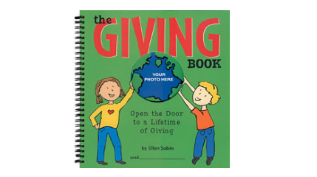Raising Charitable Children in Charitable Families

As a philanthropist, you’ve drunk the proverbial ‘Kool-Aid’ and already know the value of giving. Your children or grandchildren may already be learning about philanthropy by watching you or other family members. But, there may be times when you’d like some fresh ideas to inspire and excite them or, perhaps, you’d like to introduce other members of your community to the joys and rewards of giving.
The best way to empower the children you love is to help them embrace their ability to make a difference and help others. This gift will give them self-esteem, will build their character and will also create the next generation of givers!
One of the most important ways to build character in children is to help them explore their power to help others and make the world a better place. Here are some tips to get kids excited about charity and giving:
- Be a Good Role Model: Children are watching. If you’re encouraging them to help others and make positive contributions to the community, then you need to let them see you doing the same. Spend time talking with children about your volunteer or philanthropic work and explain why these activities are so important to you.
- Let Them Decide: Kids love to feel like they are in charge. Since giving and charity are such personal endeavors, this is a perfect time to let the child call the shots. Help them research different causes and programs that they could support by volunteering or donating some of their allowance. Let children look around their community and think of ways that they can help others.
- Start Small: To a child, ending world hunger or finding a cure for a disease may seem abstract and beyond their impact. Start with causes closer to home – a neighbor who needs help in their yard, a local dog shelter that needs supplies, or children at an area hospital who could use an uplifting card or artwork for their walls. When kids feel the direct impact of their actions, it reinforces their ability to make a difference in the world around them.
- Use Current Events: It can be difficult to shield children from events covered by the media that have a negative impact on people and places in the world. From natural disasters, to sickness and poverty, you can use these negative stories to highlight the positive actions and impact made by caring individuals and organizations.
- Make it Fun: Hands on experiences are always more fun and effective than conversation alone. Look for opportunities that will bring philanthropy to life for a child. Many nonprofit organizations have interactive sites that help users understand more about their cause and the work they are doing. You can call someone at a local charity and schedule a site visit to see, first hand, the work that they are doing. There are also a number of products on the market, like The Giving Book: Open the Door to a Lifetime of Giving, that let children think about philanthropy and supporting the community in a fun and interactive way.
- Throw a Party! A rainy weekend, a playdate, a family event, or during the holiday season, it’s ALWAYS worth engaging family and friends in activities that invite them to be giving and thankful. That’s why you may want to throw a “GIVING PARTY”. Check out the free “Parties with Purpose” guide that helps parents, nonprofits and others to plan fun, themed parties that engage kids in giving and charity. If you want to think beyond your family, host or promote a “Giving Party” at a local library, youth program, summer camp or other group gathering and watch as children embrace these values.
- Spread the Giving Focus in Schools and Communities: Giving is addictive and if we can inculcate children with the “gift of giving” early on, we can ensure that they will grow up to be tomorrow’s givers. Not only will children get ‘hooked’ but they will often enlist their parents and siblings in acts of giving as well. So, how can we spread this value throughout our communities? Here are some ideas:
- As philanthropists, you can be champions by speaking at local events
- Spread tools that inspire giving in classrooms and community/youth group settings. (For example, many community and family foundations have shared copies of The Giving Book with schools to encourage service learning. Watering Can Press offers a free Teachers Guide.
Just remember, the greatest gift you can give a child is encouraging them to be a compassionate citizen who understands the power that their actions have and their capacity to improve the world around them.

